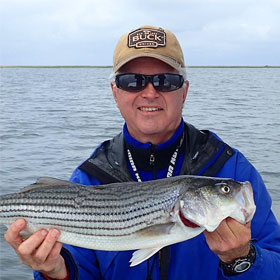Boating Season Over? Pull Out Your Winterizing a Boat Checklist
By Ken Schultz
Oct 16, 2020
This winterizing a boat checklist will remind you what steps to take to protect your engine, fuel and plumbing systems, and any components that can hold water
The end of the boating season is a good time to address any boat maintenance needs that you have. It’s also time to act on that winterizing a boat checklist you’ve got.
Don’t have a winterizing a boat checklist? Well, you may not need one if you bring your boat to a service shop. Boat dealers, marine service businesses, and some auto shops do this work, especially for motors. If you’re not the handy-with-mechanical-stuff type, or have no time for diy boat maintenance, that’s the route for you.
To Winterize or Not?
The expert advice from industry sources is that whenever your boat will be unused for a month or more in the winter, it needs to be winterized to avoid freeze-related problems. That’s true if you live where winters are cold for an extended time, and store your boat outside, but perhaps not in milder climates.
If you live in warm latitudes, if you expect to use your boat periodically during the winter (like on a warmer-than-usual day), and if you have a newer model engine, you may want to do general service, such as 100-hour maintenance, instead of winterizing. That way, your boat is ready when the time is right to get on the water.
When to Do It
Winterize your boat engine as soon as possible after you’ve finished for the season and before the weather gets severe. Get regular service done early in the winter so that you’re ready to boat on your timetable. A burst of mild weather inevitably brings many boaters to service shops in late winter or early spring, and the waiting line builds to get work done. So plan to beat the rush.
On the other hand, if you’re handy and know how to winterize a boat, you can do the work yourself, saving money and probably time.
A Winterizing Checklist
Winterizing for some boaters is entirely about the engine and the fuel system. But for others, winterizing also includes some issues regarding components of the boat, such as plumbing systems and any components that can hold water.
Space considerations don’t permit a full explanation of how to winterize a boat and motor, and what to do step-by step. So here’s a list that is condensed from information compiled by Discover Boating:
- Drain and flush the engine
- Apply engine corrosion protection per instructions in your owner’s manual
- De-fog the engine per instructions in your owner’s manual
- Add fuel stabilizer to the gas tank, and run the engine for a while afterward
- Replace engine fuel filters and fuel/water separators
- Drain all plumbing lines and add antifreeze to the systems
- Drain, siphon, mop up, or otherwise remove water from livewells, baitwells, bilge, etc.
- Remove the drain plug from the transom
- Place a cover on the boat
Lastly, for outside storing with or without a cover, make sure the bow is elevated higher than the stern so any water that gets into the boat (rain and melting snow are usual culprits) drains out the transom.









